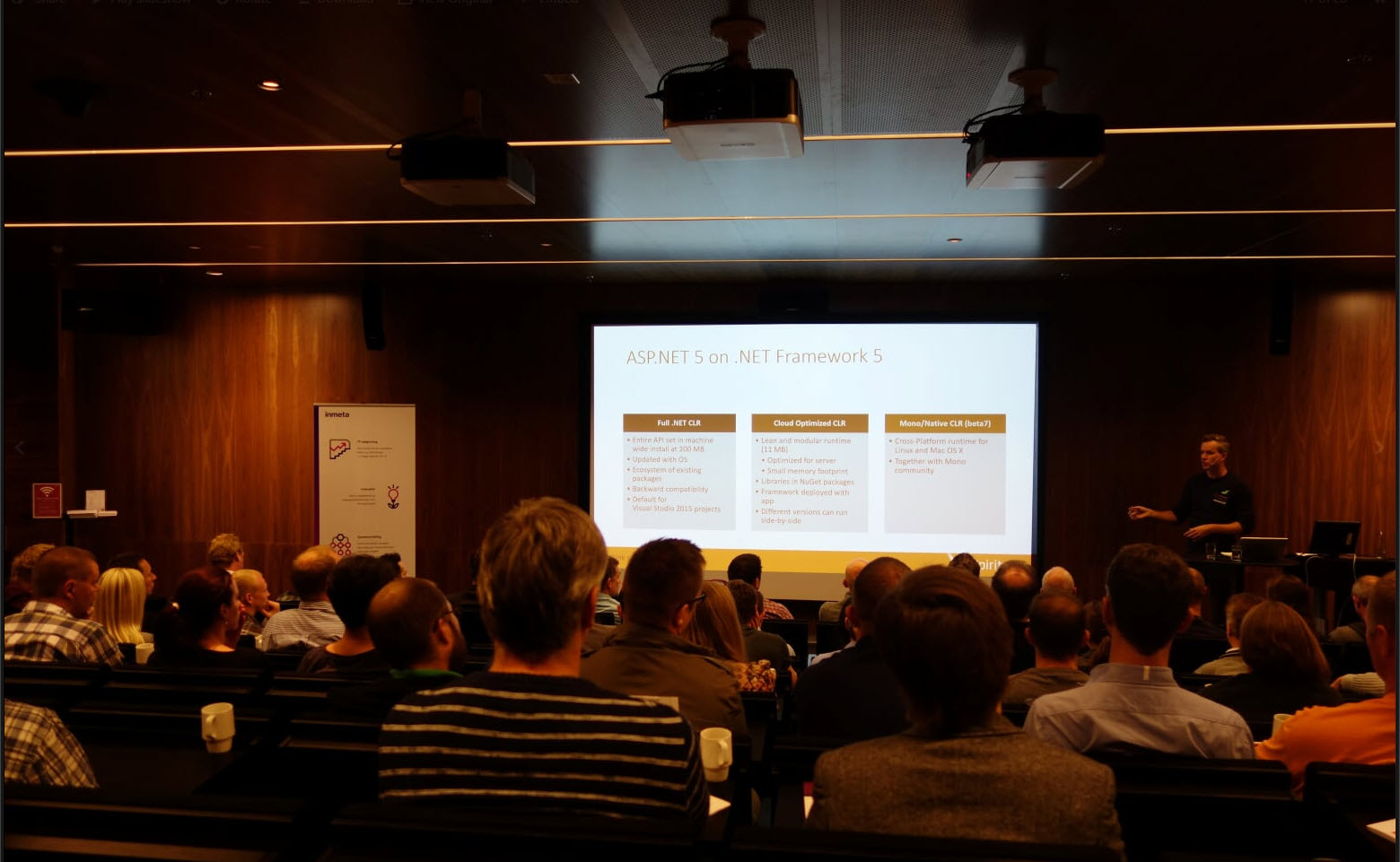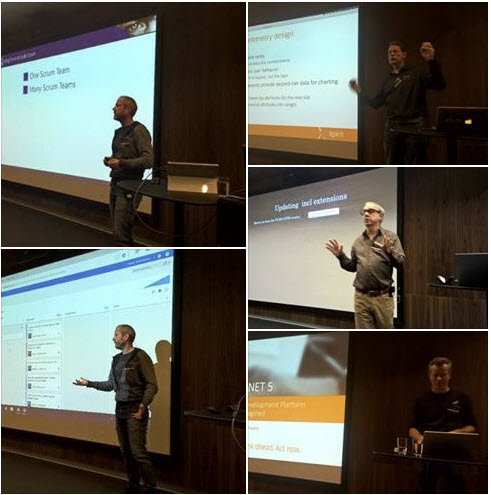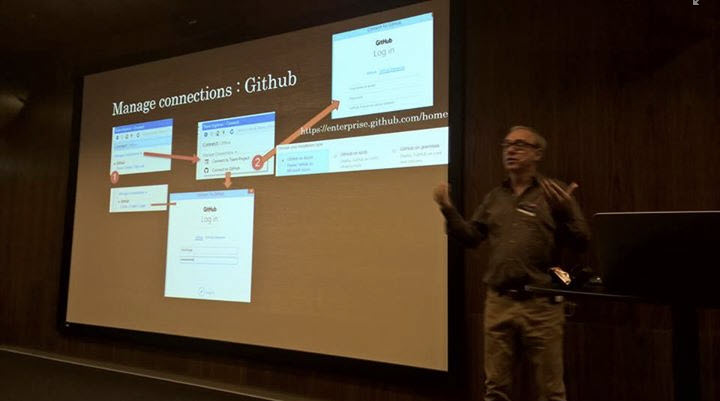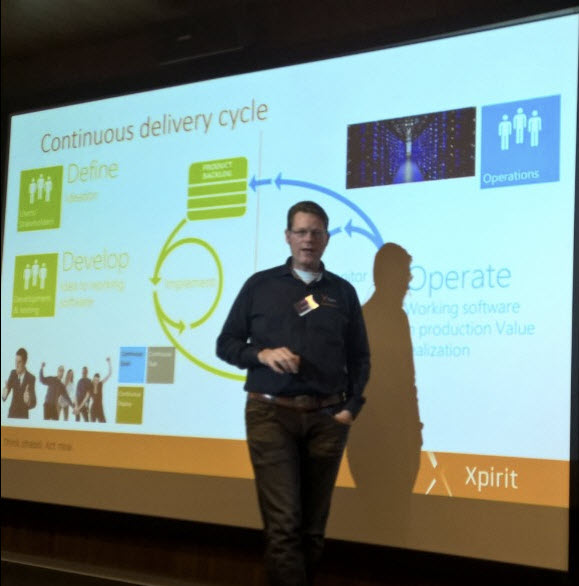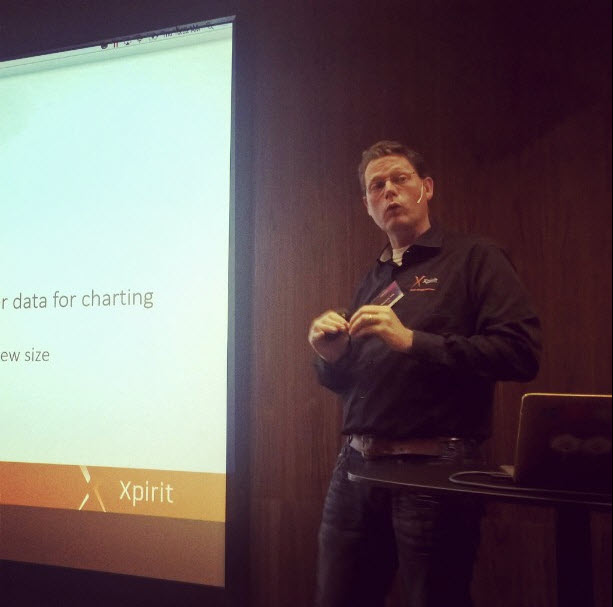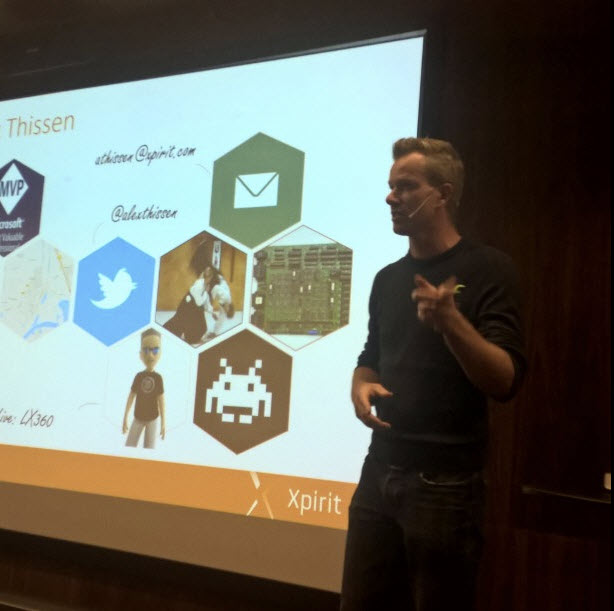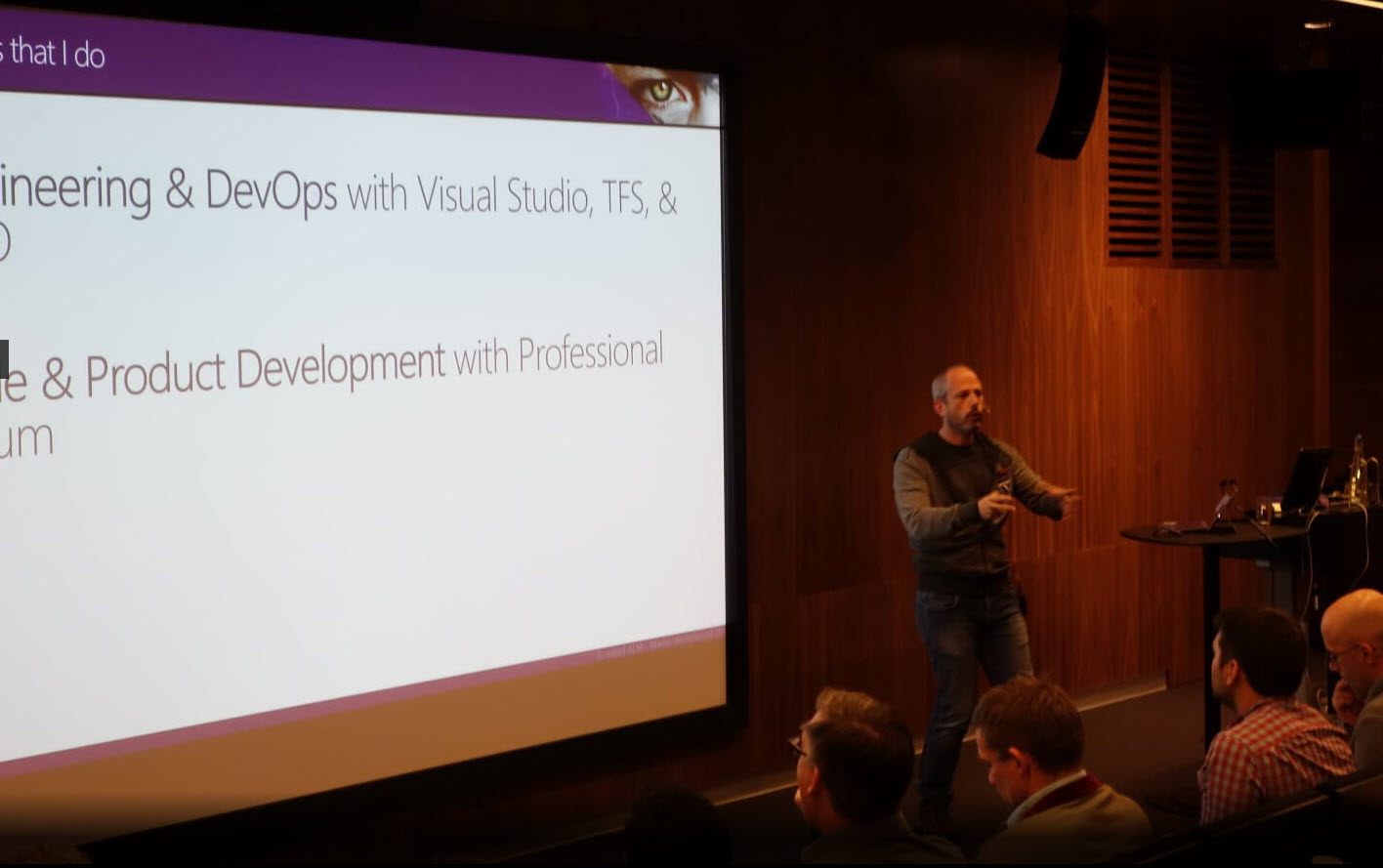Visual Studio community day – September 10th – prolog
The Visual Studio Community day Thursday September the 10th was a great event with more than 120 participants, and four enthusiastic presenters. This is an all-time-high for these events that Microsoft Norway and Inmeta have been co-hosting.
The presenters had more material than any of them managed to go through in the 45 minutes time slots each were given, so we have uploaded the full presentations to this OneDrive folder.
Four enthusiastic presenters
If your company want more information on these topics, or want to have a full company specific run of the complete presentations, we may be able to accommodate that – please contact Microsoft Norway. It may be easier for the Norwegian based presenters, but we will see what can be arranged.
Some information about the presentations
Terje Sandstrøm, ALM MVP on Visual Studio 2015 Lap Around.
We will go through some of the exciting news in Visual Studio 2015, including the source control enhancements with Git, support for pull requests, git policies (aka server side “checkin policies”), support for Github, the debugger enhancements including profiling, unit testing and intellitest. We will also look at the Roslyn compiler, the C# 6.0 enhancements, and the support for code analysis.
You can find a video of his presentation on Channel 9. Some links from his presentation are:
•TFS 2015 Update 1 will support both TFS VC and Git in the same team project
Info on UserVoice and VSO Release Archive
•Convert directly from TFS VC to Git , in Update 1 : Info on UserVoice
Unit Test Generators for NUnit and XUnit.
Four 3rd party Code analyzer links:
Code Cracker, Sonarlint, VS Refactoring Essentials and C# Essentials.
Marcel de Vries, ALM MVP and Dutch Microsoft Regional Director, on Implementing the Build-Measure-Learn loop with Visual Studio 2015 and Azure Application insights
We are constantly looking for ways to be more efficient in the way we build software. Continuous deployment is the latest trend in agile software development to achieve this goal, but the big question still remains; how can I create an efficient feedback loop and learn where to focus in my product development? In this session I will discuss the notion of the Minimal Viable Product (MVP) and how you can set up an efficient Build-Measure-learn loop to help you focus on building the right things at the right moment. I will use Microsoft Application Insights to show you how you can add telemetry to your application to learn what parts of your product are used, how the performance of your application is from an end user perspective and how to get diagnostics information to fix problems fast. We will cover advanced techniques to correlate different streams of data and the ability to correlate them to one client coming from e.g. Mobile devices (native iOS, Android, Windows Phone) or your website.
Download Xpirit Magazine
Blogging at FlyentBytes.
Alex Thissen, C# MVP, on ASP.NET 5 - Microsoft`s Web development platform reimagined
The ASP.NET Framework is rebuilt from the ground up in version 5. On the surface it might still resemble the ASP.NET you have come to know in the past 13 years. Underneath the covers there are immense changes in the way ASP.NET works. It is designed with modern software development practices in mind and clearly shows the shift in Microsoft's approach to web, cross-platform and open source development. In this session you will see the most important parts of ASP.NET 5 and get a glimpse into the future of .NET as well. We will look at some of the areas where ASP.NET 5 can be used, such as MVC 6 for web applications and Web APIs, as well as innovative hosting scenarios on Microsoft Azure, including the new Azure Service Fabric.
Main starting point at https://www.asp.net/vnext
•Open sourced at
•https://github.com/aspnet
•https://github.com/dotnet/home
•Help and feedback
•JabbR: https://jabbr.net/#rooms/aspnetvnext
•ASP.NET vNextforums: https://forums.asp.net/
•Nightly build for the adventurous
•https://github.com/aspnet/homefor instructions on how to do bleeding edge
Martin Hinshelwood, ALM MVP and Scrum.org trainer, on Taking Scrum from one team to many with TFS 2015
While it is well understood how to implement a single team in a Team Project in TFS working against a single product, what about many? If I am scaling from less than two teams to 9 or 90 teams within a single product what do I need to consider?
Come find out how to manage a single team, scale to a Nexus (3-9 teams), and then work in multiple nexus.
Links:
https://nkdalm.net/ndc-oslo-2015
